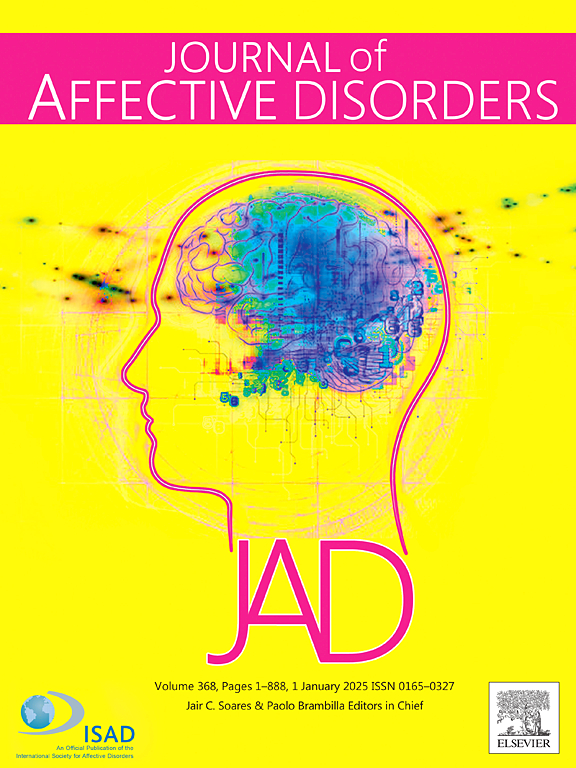Decoding depression: Event related potential dynamics and predictive neural signatures of depression severity
IF 4.9
2区 医学
Q1 CLINICAL NEUROLOGY
引用次数: 0
Abstract
Depression is a heterogeneous disorder marked by disruptions in cognitive and affective processing. While self-reported measures and clinical interviews remain the diagnostic standard, integrating objective neurophysiological markers could enhance assessment accuracy. This study demonstrates that event-related potentials (ERPs) derived from electroencephalography (EEG) can accurately classify individuals with major depressive disorder (MDD) and predict depression severity.
Participants read multi-sentence scenarios designed to vary in predictability and affective valence, with ERPs time-locked to sentence-final critical words. Features from the Late Frontal Positivity (LFP), N400, and Late Posterior Positivity (LPP) were used to train machine learning classifiers for three tasks: clinical diagnosis (MDD vs. Healthy Controls (HCs)), Beck Depression Inventory-II (BDI)-based depression risk, and Patient Health Questionnaire-9 (PHQ9)-based depression risk.
Our models achieved 80 % accuracy in distinguishing MDD from HC and reliably identified high-risk individuals on both self-reported depression scales. The LPP features were most predictive of clinical diagnosis, whereas N400 and LFP features were more strongly associated with symptom severity. Feature overlap analysis further revealed that distinct neurocognitive processes underlie diagnostic and symptom-based classification, highlighting the potential of these neural markers to capture both categorical and dimensional aspects of depression.
These findings provide compelling evidence that ERPs can serve as objective biomarkers for depression, moving beyond subjective assessments. By leveraging machine learning to analyze neurophysiological responses to linguistic and affective stimuli, this approach lays the foundation for data-driven, personalized psychiatric evaluation—offering a scalable tool for depression diagnosis and severity stratification.
解码抑郁:事件相关的潜在动态和抑郁严重程度的预测神经特征。
抑郁症是一种异质性疾病,其特征是认知和情感处理的中断。虽然自我报告测量和临床访谈仍然是诊断标准,但整合客观神经生理指标可以提高评估的准确性。本研究证明脑电图(EEG)的事件相关电位(ERPs)可以准确地对重度抑郁症(MDD)患者进行分类并预测抑郁症的严重程度。参与者阅读多句子的场景,这些场景被设计成具有不同的可预测性和情感效价,erp被时间锁定在句子的最后关键词上。来自后额叶阳性(LFP)、N400和后验阳性(LPP)的特征被用于训练机器学习分类器,用于三个任务:临床诊断(MDD vs.健康对照(hc))、基于贝克抑郁量表ii (BDI)的抑郁风险和基于患者健康问卷9 (PHQ9)的抑郁风险。我们的模型在区分重度抑郁症和HC方面的准确率达到了80% %,并且在两种自我报告的抑郁量表上可靠地识别出高危个体。LPP特征最能预测临床诊断,而N400和LFP特征与症状严重程度的相关性更强。特征重叠分析进一步揭示了不同的神经认知过程是诊断和基于症状的分类的基础,强调了这些神经标记在捕捉抑郁症的分类和维度方面的潜力。这些发现提供了令人信服的证据,表明erp可以作为抑郁症的客观生物标志物,超越主观评估。通过利用机器学习来分析对语言和情感刺激的神经生理反应,这种方法为数据驱动的个性化精神病学评估奠定了基础,为抑郁症诊断和严重程度分层提供了可扩展的工具。
本文章由计算机程序翻译,如有差异,请以英文原文为准。
求助全文
约1分钟内获得全文
求助全文
来源期刊

Journal of affective disorders
医学-精神病学
CiteScore
10.90
自引率
6.10%
发文量
1319
审稿时长
9.3 weeks
期刊介绍:
The Journal of Affective Disorders publishes papers concerned with affective disorders in the widest sense: depression, mania, mood spectrum, emotions and personality, anxiety and stress. It is interdisciplinary and aims to bring together different approaches for a diverse readership. Top quality papers will be accepted dealing with any aspect of affective disorders, including neuroimaging, cognitive neurosciences, genetics, molecular biology, experimental and clinical neurosciences, pharmacology, neuroimmunoendocrinology, intervention and treatment trials.
 求助内容:
求助内容: 应助结果提醒方式:
应助结果提醒方式:


